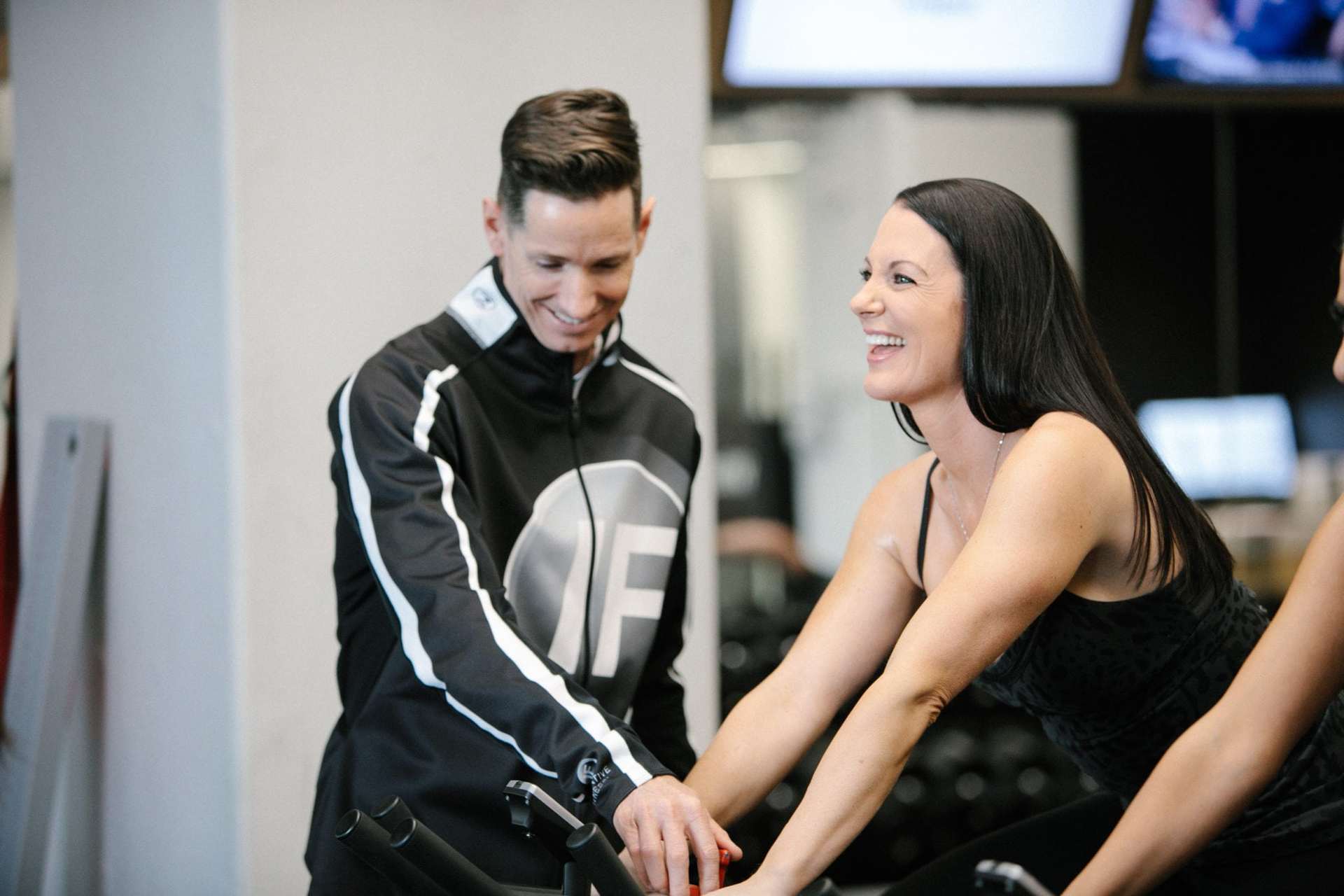We have all been there. Walking on the treadmill about to start your workout, this is supposed to be your ‘me’ time. You love doing this!
But for whatever reason your mind is wandering. When’s the last time the dog went out? I wonder why my kids’ school called me earlier. God, work drained me today. Here comes your trainer with that giant grin plastered across his face. The volume of his greeting alone could knock you off your feet. “Alright,” you say to yourself, “Let’s just get through this”.
Your motivation just isn’t there. You wish you could channel that ice cold, Rocky Four-like focus that you felt during last week’s workout. The only thing is, Rocky doesn’t have a presentation coming up tomorrow. Or kids. Or a husband or a wife. Rocky doesn’t have a mortgage.
“How am I going to get through this?”
Motivation can be a funny thing. Some days you have it and some days you just don’t. We aren’t professional athletes, and sometimes fitness takes a back seat. But how can we manage this? How can we limit, as much as possible, those workout where we just can’t seem to get into it?
Motivation can be defined very simply as the direction and the intensity of one’s effort (Sage, 1977). There are many variables that influence the direction and the intensity of one’s effort, and intrinsic motivation varies from person to person and situation to situation.
So, how can we, as recreational athletes, attempt to increase our motivation? First, we must understand what motivates us as individuals. Our personality traits will determine how much intensity we are able to direct at any given situation. The Need Achievement theory (McClelland, 1961) states that there are two different types of people: those who are motivated to achieve success, and those who are motivated to avoid failure. I like to call them chasers and dodgers. Both chasers and dodgers will react to situational factors differently. When approaching any situation, every person analyzes both the probability of success and the incentive value of success. The difference between chasers and dodgers can be seen in their physical and emotional responses to challenging situations. Chasers tend to seek challenging situations, as these situations enhance their athletic performance. Dodgers on the other hand tend to avoid challenging situations as they will perform more poorly when they are experiencing stress.
Now is the time to take a step back and swallow your pride. Evaluate yourself objectively. When it comes to physical activity, are you a chaser, a dodger, or somewhere in between? This information will become useful when you are feeling unmotivated.
Great, on to the fun stuff, starting with goal setting. I could write a very long, boring book about the importance and the effectiveness of setting goals, but I will keep it short and sweet. Goal setting is paramount when it comes to staying motivated over an extended period of time. Remember how motivation was defined earlier? Direction and intensity? Goal setting is an avenue to providing half of that formula. It gives us direction. If we have direction, we have a reason for intensity. Find a goal that aligns with your values, write it down, and develop a plan of attack. Do you like hiking? Great, climb a mountain next year. Do you want to look awesome naked? Cool, lose 5 pounds this month. Regardless of what your goal may be, having direction makes it much easier to bring the intensity to your workouts.
When setting the goal itself, base it on what kind of personality you have. If you are a chaser, make the goal challenging and ambitious. Make it something scary and new. If you are a dodger, keep your goals shorter term and attainable. Don’t put too much pressure on yourself, don’t compare yourself with a standard, and reward yourself when you complete your goal. Do it for a cause.
OK, so you have a goal, but in this moment there are too many things bringing you down right now to bring intensity to your workout. Obviously, the interpersonal factors affecting you aren’t going to change.
So what can we change?
The answer lies in your surroundings. You need to change the context of your workout to find motivation. In my experience, there are two major ways to manipulate the environment to increase your level of motivation. The first is competition. Find a buddy, and try to beat them. Have a race, see who can lift more weight, or play a sport. You can even compete with yourself by trying to beat a personal best. If you are a dodger pick an opponent that you know you can beat, and if you are a chaser pick an evenly matched opponent. The second tool that you can use to increase motivation is my personal favourite: FUN. Put yourself in a position to enjoy yourself. Ask your trainer if you can turn your workout into a game, or if you can practice a sport skill. If it’s nice out, go outside… heck, go outside if it’s raining too! And SMILE. Something as simple as a smile can work wonders for your energy level. Remember, we are not professional athletes, so fitness should be something that we enjoy, not something that we have to do.
So, next time you find yourself on that treadmill wondering how you are going to make it through this workout, take a step back. Maybe it’s time to set a goal. If you already have a goal, remind yourself why you set it. Find some intensity in the moment by having a friendly competition, and above all, have fun and keep being awesome.
Michael Chong B.Sc.Kin(H), FMS II
Professional Fitness Coach
Sales Manager
Innovative Fitness Kitsilano
p. 604 714 1661 / c. 604 349 5115
www.InnovativeFitness.com
Like IF – www.Facebook.com/InnovativeFitness
Follow IF – @IFDifference
Watch IF – www.YouTube.com/InnovativeFitness1
Sources
McClelland, D. (1961). The achieving society. New York: Free Press.
Sage, G. (1977). Introduction to motor behaviour: A neuropsychological approach (2nd edition).
Reading, MA: Addison-Wesley.






